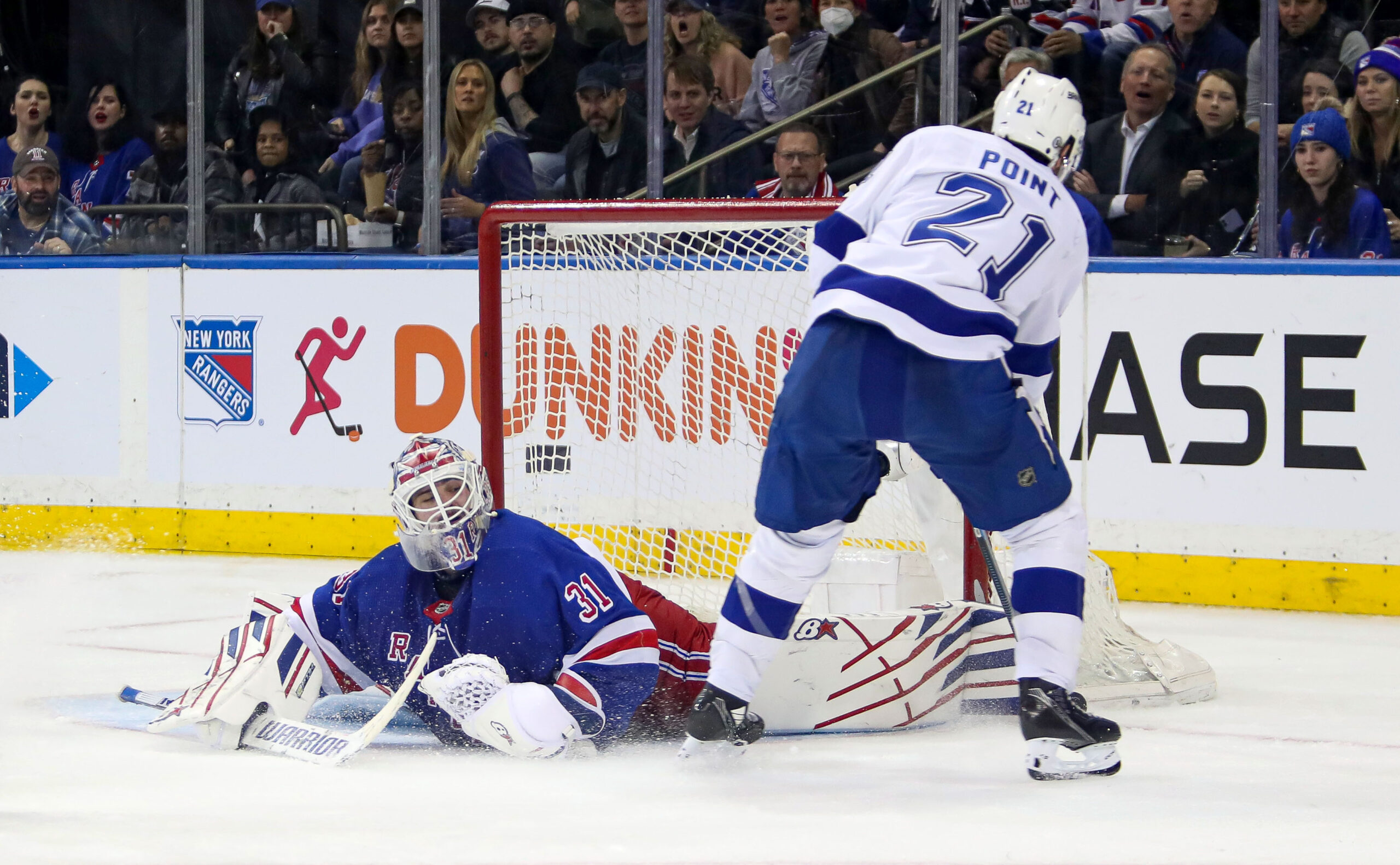In terms of theory behind microstats, they are descriptive statistics that represent game events versus a player’s ability. In hockey, microstats evaluate individual player and team performance. While microstats still have room for improvement, they are worthwhile in hockey analytics because they go beyond surface-level statistics. Two areas microstats don’t account for are factors like coaching and systems, which can sometimes skew the statistics without proper context.
Using Microstats to Understand What Hockey Macrostats Represent
For the 2023-24 NHL season, Jack Pallotta and Kyle Pereira hand-tracked the Tampa Bay Lightning microstats. The duo focused on the club with a solid sample size of double-digit games. Nobody has time to watch every game on the NHL schedule each season. Therefore, fans turn to macorstats to capture the big picture. Macrostats from websites like EvolvingHockey and NaturalStatTrick often lack context and can be misleading. Far too frequently, fans will be too quick to jump to conclusions on social media will utilize these resources to deem a player or team superior to another. The issue with this method is that macrostats don’t always tell the complete story on the ice.
However, a mix of macrostats and microstats in hockey analysis can solve the divide between analytics and non-analytics users. Furthermore, adding microstats to an argument provides further context and a deeper understanding of events throughout a hockey game. Furthermore, microstats tell the story of macrostats in an easy-to-understand format. Let’s analyze this point further with Last Word’s Tampa Bay Lightning microstats workbook.
The Significance of Passing Stats
The most under-covered and vital data point in the hockey analytics community is passing stats. While expected goals continue to lead the charge for analytics users, there are cases where a team heavily favoured based on analytical models loses a matchup or playoff series. Why does this continue to happen? One answer is the lack of passing data collected and analyzed. Passing data could explain the New York Rangers Presidents Trophy run during the 2023-24 season. While the team controlled less than 50% of the on-ice expected goal share, they were arguably the best passing team via JFresh’s tracked stats. At Last Word, the Lightning microstats projects emphasize passing data, with seven different pass types in the workbook.
Point Passes and Puck Possession
Low-to-high or point passes come from deep in the zone and typically wind up on a defender’s stick at the top of the zone on the blue line. When pucks frequently find defenders in the offensive zone, the players on the ice possess the puck with a ton of time in the offensive zone. With more time in the offensive zone, teams generate more on-ice shot attempts.
Corsi is a hockey statistic that represents a shot attempt. At 5v5, the top forwards in Corsi for percentage (CF%) on the Lightning last season were Nikita Kucherov (53.76 CF%), Brandon Hagel (53.33 CF%), Anthony Cirelli (52.36 CF%), and Brayden Point (52.17 CF%). A Corsi for percentage (CF%) above 50% indicates the player generates more shot attempts than they surrender when on the ice at 5v5. In other words, these players possess the puck on the ice and control the offensive zone. Where did these four players rank in passes to the point for the Lightning microstats workbook at Last Word?
The top four players in Corsi for percentage (CF%) at 5v5 for the Lightning last season placed the top four in passes to the point during the tracked games of the Tampa Bay microstats project. Kucherov led the way with 15-point passes, followed by Cirelli with 14, Hagel with 12, and Point with 11. The macrostats and microstats line up to tell a story. The top Lightning forwards possess the puck in the offensive zone and generate shot attempts using low-to-high puck movement.
Future of the Project
With player cards in the process this summer, Last Word plans to return with additional data for the 2024-25 season. The website plans to expand its sample size for the project and possibly develop new statistics to track.
Main photo credit: Danny Wild-USA TODAY Sports






